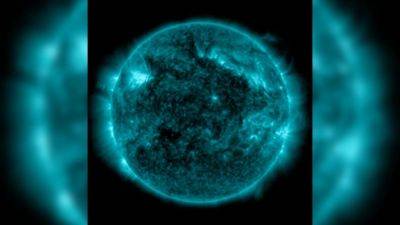The current solar cycle is expected to peak this year, according to scientists. Consequently, we've seen an increase in the number as well as the intensity of solar phenomena such as solar flares, solar storms, CMEs and more. In a new incident, the Sun has hurled out as many as three solar flares towards Earth, and one of them is the strongest solar flare of the solar cycle 25! This poses a potential solar storm danger. Know details.
Solar flare News, Tips, Tricks & Ideas
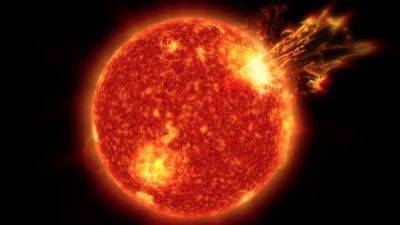
Solar storm watch: X-class solar flare impacts Earth, causing radio blackout over Pacific Ocean
In the last few days, there has been a growing danger of a geomagnetic storm impacting Earth. This development comes just days after the strongest solar storm since 2017 struck the planet, causing a 9-hour-long geomagnetic storm. The Sun has turned volatile in the last few months due to the approaching peak of solar cycle 25. As the peak arrives, solar phenomena such as solar particles, CMEs, solar flares, solar storms and geomagnetic storms are expected to increase both in frequency and severity. Now, NASA, keeping a solar storm watch, has revealed that a solar flare struck Earth recently, causing a radio blackout in the process.

Geomagnetic storm alert issued! NOAA says solar wind could trigger solar storm on March 9
Just a few days ago, an M-class solar flare hit Earth and sparked a G2-class geomagnetic storm. This is amidst the rising solar activity during the current solar cycle 25, which is expected to enter its peak this year. Consequently, the planet has witnessed a growing number of solar particles, CMEs, solar flares, solar storms and geomagnetic storms in the last few months, and it is expected to rise further. Now, a geomagnetic storm alert has been issued which could trigger a solar storm.
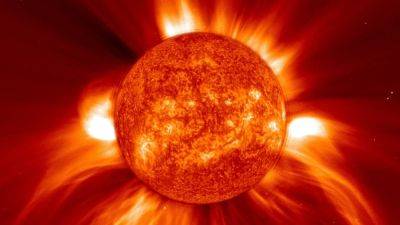
Volatile Sunspot all set to spew out solar flare, trigger a solar storm, reveals NASA
In the last two months, we've witnessed a sharp increase in solar activity. This is due to the approaching solar maximum, a period in the Sun's 11-year cycle where its activity is at its peak. Consequently, Earth has been bombarded with solar particles, CMEs, solar flares, solar storms and geomagnetic storms. Just recently, a G2-class geomagnetic storm sparked auroras over the Arctic Circle. In a new development, NASA says that a sunspot could hurl out an M-class solar flare which could trigger a solar storm. Check details.
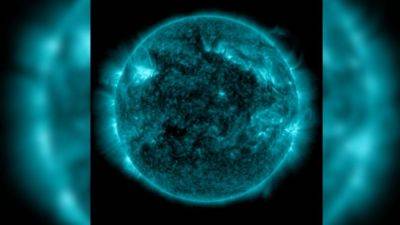
Hyperactive Sunspot Unleashes Most Powerful Solar Flare in Six Years
A recent surge of solar activity has captured the attention of astronomers and space weather enthusiasts alike, as a hyperactive sunspot unleashed its third X-class solar flare within a 24-hour period. This remarkable series of events marks the most potent solar eruption in six years, raising concerns about potential impacts on Earth's space environment.
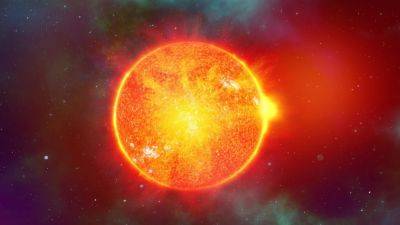
Solar storm alert! Sunspot AR3576 poses X-class solar flare danger to Earth, reveals NASA
In recent months, the frequency of X-class solar flares has increased. This rise in solar activity can be attributed to the approaching peak of solar cycle 25, which is expected to arrive in 2024-25. On December 31, the strongest solar flare in 7 years was captured by the NASA Solar Dynamics Observatory (SDO). It originated from the same sunspot that hurled out another X2.8 solar flare on December 14. Now, another X-class solar flare danger has been observed by NASA. Know all about this solar storm alert for Earth.

Solar flare danger! Growing sunspot could spark a solar storm today, reveals NASA
Solar storm today: Solar activity has been on a dangerous rise in the last few months, and we've already seen various solar phenomena impact Earth. In the last month, there were two instances of terrifying X-class solar flares hitting the planet, one of which caused a radio blackout in the polar regions for almost 3 days. The Sun has been showing all its might for the past couple of months and as we approach the solar maximum that will likely occur in 2024-25, its wrath is only expected to increase. NASA has now revealed a growing sunspot that could hurl out a solar flare and spark a solar storm. Check details.
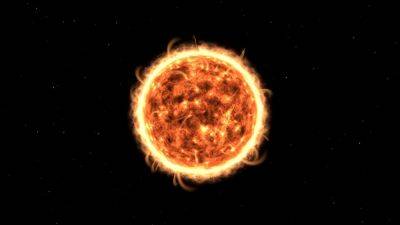
Solar storm warning: Unstable sunspots could hurl out X-class solar flares today, NASA says
Even though we're just 4 days into 2024, we've seen already seen several strong solar flares hurled out towards Earth, sparking a solar storm. On December 31, the Sun hurled out an X-class solar flare that hit Earth just a few days ago, and it is still causing radio blackouts in the polar regions. The Sun has been showing all its might for the past couple of months and as we approach the solar maximum that will likely occur in 2024-25, its wrath is only expected to increase. NASA has revealed that the effects of this rising solar activity are now being seen again as multiple sunspots possess energy for solar flares that can spark a solar storm. Know all about this upcoming solar storm today.
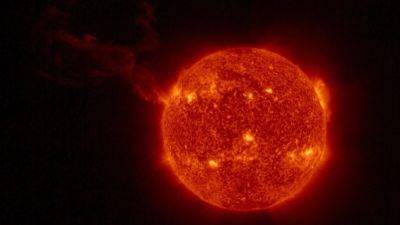
Sun sparks solar storm, causes radio blackouts on Earth; NASA SDO reveals reason and affected regions
On December 31, the Sun generated the strongest solar flare in 7 years and it was captured by the NASA Solar Dynamics Observatory (SDO). It originated from the same sunspot that hurled out another X2.8 solar flare on December 14. According to the National Oceanic and Atmospheric Administration (NOAA), this X-class solar flare also sparked radio blackouts. Now, it has been revealed that Earth is still reeling from the efforts of the solar storm thereby generated, and radio blackouts are still being observed. The regions specifically hit are in the Polar regions. The solar storm also generated some beautiful auroras in this region. Know all about it.
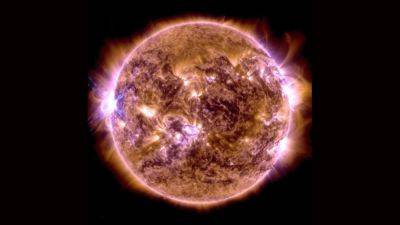
NASA's SDO snaps strongest solar flare since 2017, sparking radio blackouts on Earth
Slowly and steadily, solar activity has been on the rise after a brief lull. In the last few months, we've witnessed a growing number of solar flares, and solar storms, all of which have been linked to the current solar cycle. For the unaware, the solar cycle is an 11-year period during which the Sun's activity crests and troughs. According to scientists, the solar cycle 25 will enter the peak of solar maximum in mid-2024, and it has already exceeded the predicted number of sunspots. However, the solar activity isn't likely to decrease anytime soon, and a stark reminder of the Sun's might was witnessed on December 31, 2023, as the strongest solar flare since 2017 was recorded by NASA. Check details.
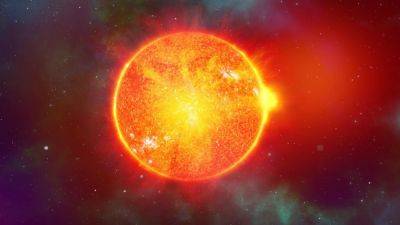
Solar storm approaching Earth soon, set to hit on January 1! Auroras to be visible in high latitudes
With 2024 approaching, the frequency of solar storms, solar flares, geomagnetic storms, and other solar phenomena is set to increase. According to various models and predictions by scientists, the solar cycle 25 will enter the peak of solar maximum in mid-2024. Solar maximum is when the Sun has the highest number of sunspots (active areas of solar flares). These sunspots are what send these vicious solar storms toward the Earth. A recent report has suggested that a solar storm is set to hit Earth and there's a chance that it will generate auroras. Know all about it.
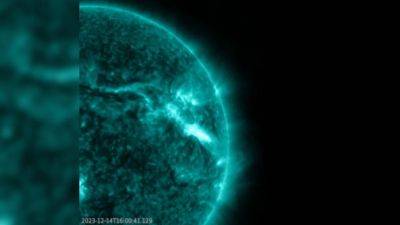
Terrifying X-class solar flare hits Earth, sparks radio blackout across US, says NASA
The Sun has been showing all its might for the past couple of months and as we approach the solar maximum, which will likely occur in 2025, its wrath is only expected to increase. The solar maximum is the period of greatest solar activity during the Sun's 11-year cycle. At solar max, the changes in the Sun's magnetic field result in more solar activity such as sunspots, CMEs, eruptions, and more. The effects of this rising solar activity were seen a few days ago as NASA and the National Oceanic and Atmospheric Administration (NOAA) recorded the strongest solar flare of this solar cycle 25. Know all about it.
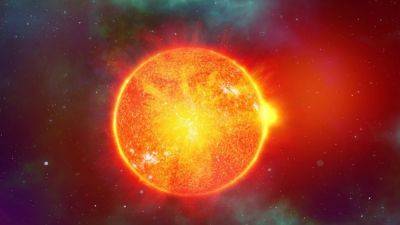
M-class solar flare threat! NASA observatory keeping a watch on dangerous sunspot
Just recently, it was revealed that Earth could be in the firing line of a solar storm as sigmoid eruption was observed on the surface of the Sun. This eruption hurled out a Coronal Mass Ejection (CME) towards Earth, which has the potential to deliver a weak blow to the Earth's magnetic field. However, this isn't the only threat. In a new development, the NASA Solar Dynamics Observatory (SDO) has tracked a dangerous sunspot and it could hurl an M-class solar flare towards Earth. This is the latest solar phenomenon to occur as we move towards the peak of the solar cycle 25. Know all about the M-class solar flare threat.

Multiple M-class solar flares erupt on the Sun triggering radio blackouts on Earth, reveals NOAA
Yesterday, December 5, a minor solar storm struck the Earth sparking auroras in the arctic circles. It was a minor affair, but the solar activities have been relentless with the Sun nearing the peak of its solar cycle. In the last 24 hours, three separate M-class solar flares have erupted on the Sun, releasing extreme ultraviolet radiation. The radiation has resulted in triggering short-wave radio blackouts on Earth, as per data from the National Oceanic and Atmospheric Administration. It is unclear at this point whether any of these eruptions have released coronal mass ejections directed at our planet, which could further cause solar storms in the coming days.

NASA says strong incoming solar winds could spark geomagnetic storm on Earth
The barrage of solar activity continues as we near the peak of solar cycle 25. For the unaware, a solar cycle is an 11-year period where the Sun's activity dips and rises. The lowest point of activity in the cycle is known as the solar minimum, while the period of highest activity is known as the solar maximum. As we approach the solar maximum, Earth is predicted to face more CMEs, sunspots, solar flares, and solar storms.
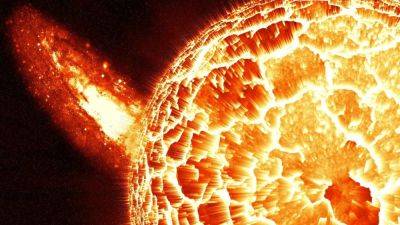
200000 km wide sunspot presents solar flare threat, shows NASA's SDO
The Sun is at the center of our solar system and is essential for life to exist as it provides warmth, without which Earth would've been a frozen and desolate wasteland. However, it also poses a threat to the planet on some occasions. With the peak of the solar cycle 25 nearing, we've already seen numerous CMEs, solar flares, solar storms, and other particles impact the planet. While most of them have left Earth unscathed, a handful of them have caused effects such as radio disturbances, and power grid failures.
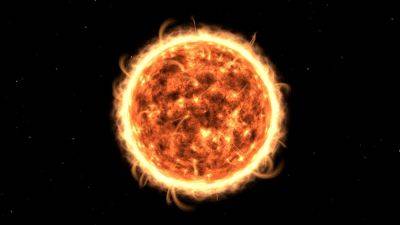
Earth-directed solar flares can erupt soon, detects NASA SDO; aurora-sparking solar storms possible
The Sun has turned volatile and its activity is expected to increase further as the peak of solar cycle 25 comes closer. The current solar cycle has already exceeded expectations, with more number of sunspots already seen than predicted. Earth could be in line to face CMEs, solar flares, solar storms, and other particles with potentially disastrous consequences in the coming weeks and months.

C-class solar flare danger today! NASA reveals key details about the Sun
To study the Sun, the Solar and Heliospheric Observatory or SOHO was launched in 1995 by NASA in collaboration with the ESA, and it began operations in May 1996. It was initially launched as a 2-year mission but has now completed 25 years of service. According to NASA, SOHO aims to study the Sun “inside out”, meaning it has been conducting analyses from its deep core to the outer corona and the solar winds. It captures images of the sun's corona, measures the velocity and magnetic fields of the sun's surface, and observes the faint corona around the Sun.
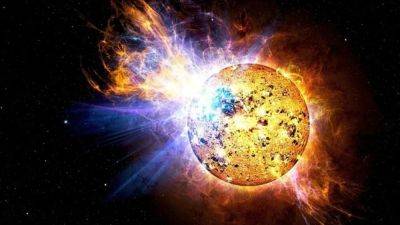
Sunspot could hurl out M-class solar flares, reveals NASA
Like asteroids, solar flares also pose a threat to Earth. Strong solar flares can cause power and radio blackouts for several hours or even days, spark auroras, give people in airplanes a dose of radiation and can even influence elections! Technological instruments are especially at a risk during flares. This is because when cosmic rays strike Earth, they release various particles like energetic neutrons, muons, pions and alpha particles. Although these particles do not affect the human body, they can pass-through integrated circuits and cause damage, often changing the data stored in the memory. With the solar maximum approaching in the next few years, the Sun's activity is expected to rise, and it could result in more solar flares.
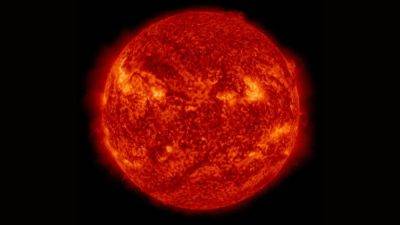
Solar flare alert! NASA observatory reveals threat of M-class flare
The Sun's activity is expected to increase in the coming months as we approach the Solar Maximum, the period in the solar cycle where activity is at its peak. It is expected to arrive in 2024 or 2025, and the number of sunspots has already exceeded previous predictions. During this peak, the planet could face CMEs, solar flares, solar storms, and other particles with potentially disastrous consequences. In a new development, NASA's Solar Dynamics Observatory (SDO), which carries a full suite of instruments to observe the Sun, has recently revealed that Earth could be in the firing line of a sunspot and dangerous solar flares could be hurled out that could have the potential to wreak havoc.
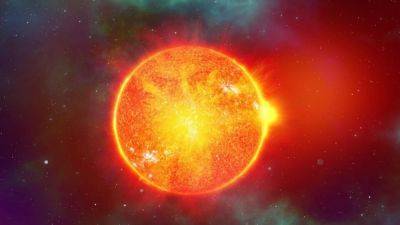
Solar flare eruptions likely soon, but solar storms not seen hitting Earth over the weekend
This weekend promises a stark contrast to the geomagnetic fireworks we witnessed last week. Unlike the previous weekend, there are no looming Coronal Mass Ejections (CMEs) threatening Earth's magnetic field. Our planet's magnetosphere is expected to remain serene and undisturbed from any solar storm.
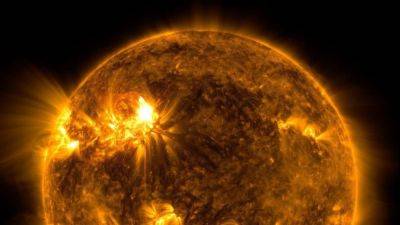
Unstable sunspots could hurl out X-class solar flares! Know the solar storm danger
In the past three days, we've seen several geomagnetic storms hit Earth. On September 24, a G2-class storm hit the planet and sparked rare, red auroras over Scotland. Yesterday, a G-1 geomagnetic storm was predicted to hit Earth due to a CME approaching the planet. The effects of the Sun have been felt in the form of solar storms, geomagnetic storms, and solar flares over the last few months. In turn, these phenomena have sparked further events such as auroras, blackouts, and disruption of radio communications. This solar activity is expected to increase even more as we approach the solar maximum, the period in the Sun's 11-year solar cycle where its activity is the highest.

Double solar flare explosion sparks BLACKOUTS on Earth; Is another solar storm looming?
More solar activity has been detected on the Sun, and it could spell bad news for the Earth. Currently, there is a coronal mass ejection (CME) that is traveling towards us and is likely to strike the planet on Sunday, September 17. But before it can even hit us, more solar flares have erupted on the Sun. Two different M-class solar flares were detected exploding on the notorious sunspot region AR3429 which has already caused multiple solar flares so far. The extreme radiation from the solar flares sparked radio blackouts on the Earth, and scientists are now looking into the fact whether another CME was hurled towards the Earth and if it can spark another solar storm.
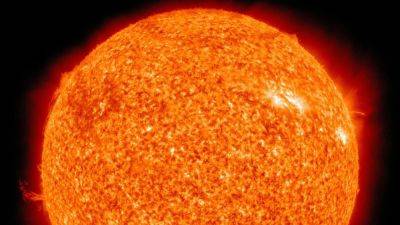
Solar storm fears rise as CME heads for Solar Orbiter; Blackouts hit America after solar flare
Solar activity has been on the rise ever since the start of the month. We have seen multiple solar flare eruptions and a couple of solar storms so far, but luckily they were not major events and their impact was very limited. However, in the last 24 hours, things have started to change. An M2.12-class solar flare erupted on the Sun, which in turn sparked a shortwave radio blackout on both the American continents. But that wasn't the worst incident of the day, as later, it was detected that a powerful coronal mass ejection (CME) cloud is headed for the the Solar Orbiter, the Sun-observing probe by the European Space Agency (ESA), and will strike it today, September 9. These events have raised concerns that an intense solar storm strike on the Earth is not too far away.
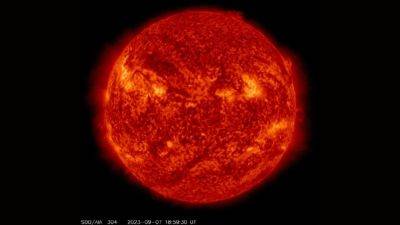
Solar flare WARNING! M2 flare could hit Earth after sunspot explosion
With the solar maximum approaching in the next few years, the Sun's activity is rising and is expected to rise even more. We have already seen a vast number of solar flares, CMEs, solar storms, and geomagnetic storms this year. Astonishingly, the Sun has already exceeded the predicted number of sunspots that were expected in the solar maximum, according to experts. To monitor the Sun's volatile nature, NASA's Solar Dynamics Observatory (SDO) carries a full suite of instruments that help it to observe solar activity.

Blackouts, solar flares, and an impending solar storm, Earth goes through a terrifying 24 hours
With the equinox approaching on September 23, solar activities have picked up again. It is known that during this period, the Earth suffered due to a higher frequency of extreme solar activities due to the magnetic poles of the Earth making a right angle with the Sun. And in the last 24 hours, the Earth has witnessed some intense blows from the Sun. There have been instances of radio blackouts, solar flare eruptions, CME releases, and a possible solar storm that can strike the Earth at any given time. So, let us take a look at what has happened in this brief period and how it affects us.
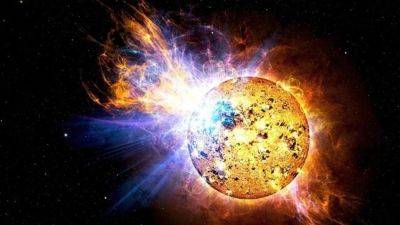
Massive sunspot set to spark dangerous M-class solar flares directed at Earth, says NASA
As we approach the solar maximum, the Sun's output is expected to increase in the coming months. As per NASA, the solar minimum occurred in 2019, which also marked the start of the solar maximum, a period where we could see the greatest number of sunspots. It is expected to peak in 2025 and the Sun could unleash CMEs, solar flares, solar storms, and other particles towards Earth with potentially disastrous consequences. Astonishingly, experts have revealed that the Sun has already exceeded the predicted number of sunspots that were expected in the current solar maximum.
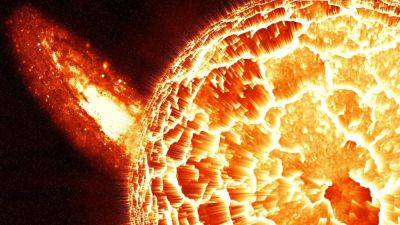
Want to go to Mars? Know the solar flare danger that can even kill you
After yesterday's success of the Chandrayaan-3 mission, the excitement in the astronomy community is at an all-time high. Many are already wondering about other new achievements India and the world can unlock. And among the huge bucket list of ideas about space exploration, one thing has always remained on top - a manned mission to Mars could pave the way for building a colony on the red planet. However, a NASA scientist has warned us that this dream may just not be possible in the near future with the current technology that we have. Why? It's because the radiation from solar flares and coronal mass ejections (CME) will kill us long before we ever reach Mars.
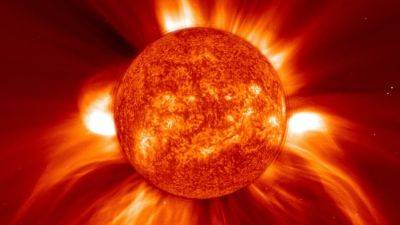
All about the fiery explosions on the Sun - know what are solar flares and CME
Over the past few months, as the volatility of the Sun increases, solar flares have been in the news constantly. Do you know what they are and how can they affect us? The Sun has been putting on a dazzling display of its power, and it's only going to get more exciting as we approach the peak of Solar Cycle 25, expected around 2025. But what's all the fuss about? Well, the Sun has some incredible phenomena like solar flares and coronal mass ejections (CMEs), that can affect us here on Earth. They are said to even affect electric infrastructure on Earth.
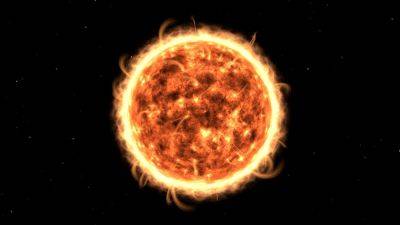
Fiery Earth-facing sunspots could unleash M-class solar flares
The Sun has been displaying its might over the last few months, and its activity is expected to increase as we move towards the peak of Solar Cycle 25, which is likely to be in 2025. During its 11-year cycle, the Sun unleashes CMEs, solar flares, solar storms, and other high energy particles which can damage electric infra on Earth. Although scientists now have the technology to predict most of these events, this cycle's activity has already exceeded the maximum threshold which was predicted earlier.

Sun spits out solar flare so terrifying it is comparable to a billion bombs
In a recent occurrence, the Sun displayed unusual tranquility, following a period of potentially hazardous solar storm activity directed towards Earth the previous week. Solar physicist Keith Strong shared observations revealing that despite the calm on Earth, the Sun's surface was far from peaceful. And it proved that with a super-powerful solar flare.
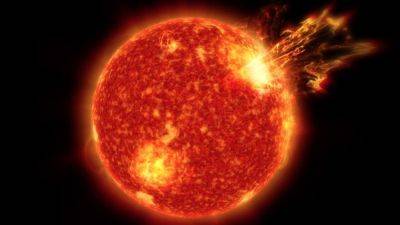
Solar storm prediction! X-class solar flares likely today, may spark blackouts
A new sunspot has entered the Earth-facing side of the Sun, and it appears to be crackling with solar flares. Luckily, so far it has not exploded, but it cannot be said just how long it will stay the same way. And perhaps that's why today's solar storm forecast has included a chance of an X-class solar flare eruption as well as the possibility of radio blackouts due to solar winds passing. It remains to be seen whether any eruptions today can release a coronal mass ejection (CME) towards the Earth and cause a further solar storm threat.
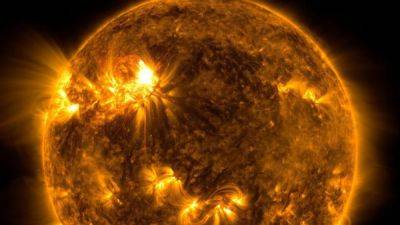
Solar storms can destroy power grids on Earth, satellites in the sky! Why scientists are worried
As the Sun moves towards the solar maximum gradually, scientists are worrying about a once in a century solar storm that can impact Earth, and humanity, severely. We are now experiencing the most active sun so far and it is generating massive solar storms frequently. The peak of solar activities happens every 11 years when the sun reaches the solar maximum. Normally, these solar storms do not severely impact the Earth, but, occasionally, they get so intense that they can generate strong geomagnetic storms that affect all the electrical infrastructure that humanity has created including the power grid and the satellites. NASA believes that if such a solar storm occurs, it could put the safety and livelihoods of people at risk. Now, it is being feared that such a massive solar storm can happen over the next few years.
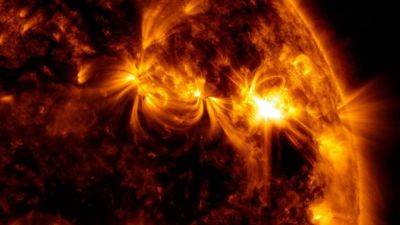
Strong solar flare disrupts radio communications in North America
Sun's activity has increased over these past few weeks and it has generated numerous strong solar storms. Currently, Sun is in its 11-year solar cycle and it will reach its maximum next year, which will make these solar storms even more intense in terms of being a potential threat to satellites, power grids, the internet infrastructure and more. On Monday, a powerful solar flare was spewed out by the Sun that caused a radio and navigation signals blackout in North America as the energetic particles reached Earth.
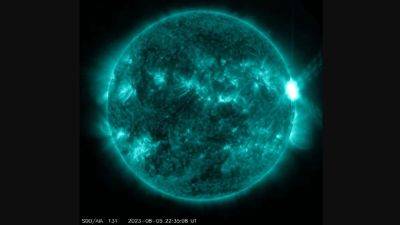
Double CME blow could spark G3 geomagnetic storm! Solar flare causes radio blackout over Pacific Ocean
As we approach the solar maximum, which is the peak of the Sun's 11-year cycle, solar activity has been steadily increasing. Last month, Earth experienced a 20 nT jolt as a CME prematurely hit the planet. In March, we also experienced the worst solar storm in six years as a G4-class geomagnetic storm hit the planet on March 23, as Earth's "shields were down”. Forecasters have now warned that yet another double event could be on the horizon as two Coronal Mass Ejections (CMEs) have been observed being hurled towards Earth.
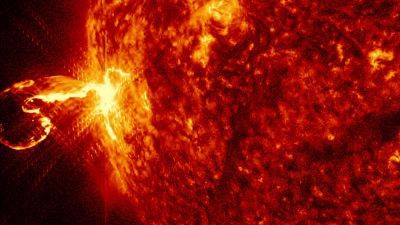
Hidden secret of the Sun finally revealed
Scientists at the Royal Observatory of Belgium (ROB) and KU Leuven have achieved a momentous breakthrough, potentially resolving one of the most enigmatic puzzles of our solar system: why is the Sun's corona hotter than its surface?
Popular Topics
Our site gametalkz.com offers you to spend great time reading Solar flare latest Tips & Guides. Enjoy scrolling Solar flare Tips & Guides to learn more. Stay tuned following daily updates of Solar flare hacks and apply them in your real life. Be sure, you won’t regret entering the site once, because here you will find a lot of useful Solar flare stuff that will help you a lot in your daily life! Check it out yourself!
